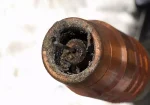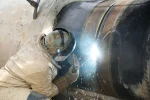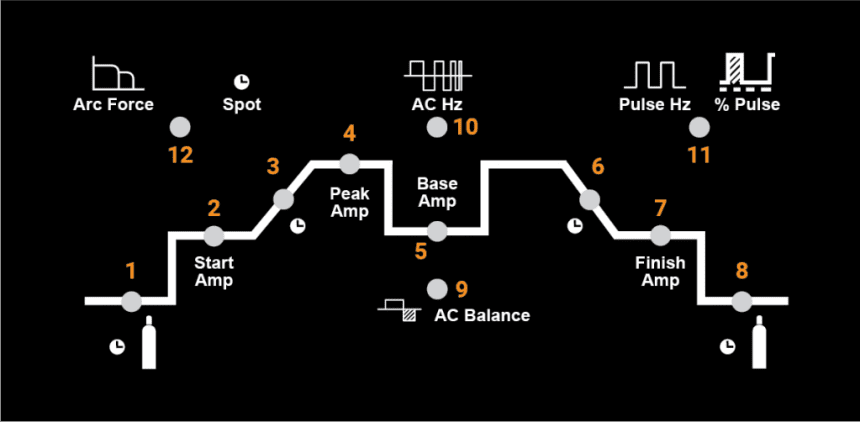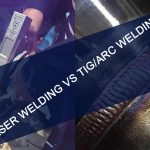To truly comprehend the disparity between lift arc and scratch start TIG welding techniques, one must delve into the intricacies of this subject. This query arises frequently among our esteemed clientele, and we are delighted to provide a comprehensive elucidation. Kindly peruse the following elucidation to acquire profound insights into this matter.
TIG Welding: What is Scratch-Start, Lift-Arc and HF Ignition?
Welding Town
What is Scratch Start TIG Ignition?
Scratch-Start TIG Ignition: A Brief Explanation
Scratch-start TIG ignition is a rudimentary method commonly employed in inexpensive inverter welders primarily designed for Stick (MMA) welding. This process entails initiating the arc by manually scratching the TIG tungsten electrode on the workpiece. It is crucial to swiftly lift the electrode off the workpiece to prevent it from sticking, while also ensuring that it is not lifted too far to avoid extinguishing the arc. Regrettably, this technique is not particularly user-friendly.
Although certain machine suppliers advertise their scratch-start machines as suitable for TIG (or stick/TIG) applications, at Weldclass, we firmly believe that such machines are not appropriate for TIG welding purposes. In our Weldclass range, all our “TIG” welding machines are equipped with either lift-arc or HF ignition, ensuring superior performance and user experience.

What is Lift Arc TIG Ignition ?
The Lift-Arc Ignition: A User-Friendly and Controlled Approach
The lift-arc ignition feature provides a highly favorable method for initiating the arc in TIG welding. To commence the welding process, the tungsten electrode is delicately touched on the workpiece and promptly lifted off. The start-up current employed during this phase is intentionally kept very low, preventing the tungsten from adhering excessively to the workpiece and safeguarding the integrity of its sharpened point. Subsequently, the tungsten electrode can be effortlessly lifted away from the workpiece. The welding machine possesses the ability to detect the moment when the contact is broken and promptly supplies the full welding current, facilitating a seamless transition.
The lift-arc ignition technique holds significant appeal for operators due to its user-friendly nature and remarkable controllability. However, manufacturers face the challenge of intricately calibrating electronic processes to ensure optimal results. It is essential to minimize the start-up current to prevent excessive sticking of the tungsten electrode to the workpiece.
In the case of Weldclass’s Weldforce welding machines, meticulous attention has been given to refining the amperages and processes to guarantee the lift-arc ignition operates flawlessly, delivering an exceptional welding experience.
Comparing Lift-Arc and Scratch-Start Ignition Systems
It is crucial to understand the distinction between the ‘Lift-Arc’ ignition system and the ‘Scratch-Start’ ignition system in TIG welding.
Many DC inverter welding machines are often advertised as having TIG capability, but in reality, they are only equipped with a ‘Scratch-Start’ ignition system.
However, it is essential to exercise caution! Scratch-Start is far from being a user-friendly process. In this method, the tungsten electrode must be swiftly touched on the workpiece, and there is a high risk of it sticking to the surface. When this occurs, the tungsten electrode needs to be removed and reshaped each time. This adds unnecessary effort and time to the welding process.
In contrast, the ‘Lift-Arc ignition system offers a highly user-friendly and controllable experience. With Lift-Arc, the tungsten electrode is gently brought into contact with the workpiece and promptly lifted off. This controlled approach minimizes the chances of the tungsten sticking to the workpiece. As a result, there is no need to remove and reshape the tungsten electrode repeatedly.
In summary, when considering TIG welding machines, it is important to opt for ones equipped with the ‘Lift-Arc’ ignition system. This ensures a more convenient and efficient welding process, enhancing the overall user experience.
What is HF TIG Ignition ?
HF TIG Ignition: Effortless Arc Initiation
HF TIG ignition, also known as high-frequency ignition, revolutionizes the process of arc initiation in TIG welding. This advanced feature empowers operators by enabling them to position the tungsten electrode in close proximity to the workpiece, eliminating the need for physical contact. With a simple press of the torch trigger, the arc is effortlessly initiated.
HF TIG ignition is commonly found in professional-grade TIG welding machines equipped with AC/DC functionality, such as the Weldclass 201T or 202T. These machines provide operators with the flexibility to choose between Lift-Arc or HF start, allowing for tailored arc initiation based on specific welding requirements.
By utilizing high-frequency energy, HF TIG ignition ensures a smooth and reliable arc initiation process, minimizing the risk of electrode sticking and improving overall welding efficiency. This feature simplifies the workflow for operators and enhances the user experience during TIG welding operations.







![12 Different Types of Welding Processes [The Definitive Guide] 11 12 Different Types of Welding Processes [The Definitive Guide]](https://www.021208.com/wp-content/uploads/2025/01/12-Different-Types-of-Welding-Processes-The-Definitive-Guide-150x150.jpg)



